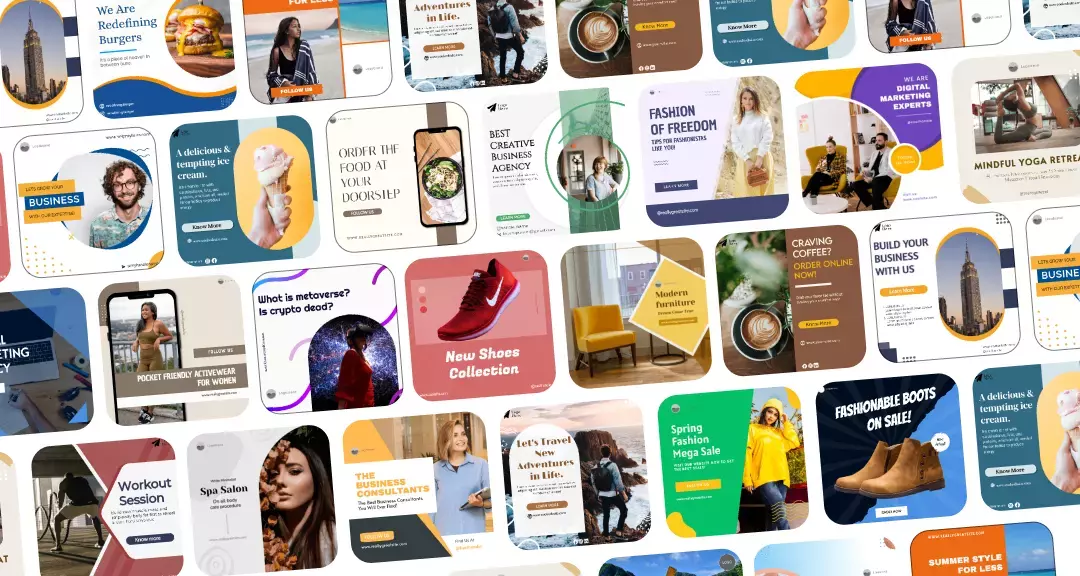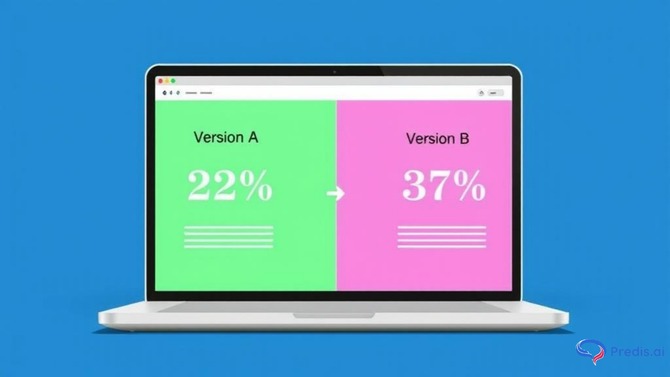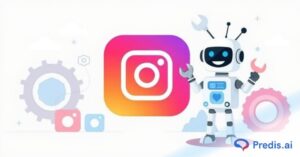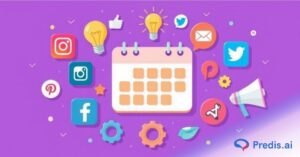Creating ads that actually perform is harder than it looks. Think about it, on average, only 1 in 5 ads reaches the performance marketers expect. That means four out of five campaigns are underperforming, costing time, money, and opportunities. A/B testing has become the gold standard to fix this: businesses that consistently run experiments report up to a 25% improvement in conversions.
But here’s the problem, creating multiple ad variations manually is exhausting. You need different headlines, visuals, calls-to-action, and sometimes even different tones. Multiply that by the number of platforms you’re running ads on, and you’re staring at a mountain of work.
This is where AI comes in. Modern tools like Predis.ai can generate dozens of ad variations in minutes, keeping your messaging consistent while giving you a playground for experimentation. AI doesn’t replace human creativity; it supercharges it. In this guide, we’ll break down how to generate ad variations for A/B testing with AI, step by step, so even beginners can create smarter campaigns and see measurable results.
TL;DR 🖋
This is a paragraph to give A/B testing helps you compare two AI-generated video versions to see which performs better. Start by defining your goal, create distinct but focused variants, and test them under equal conditions. Track key metrics like watch time and click-through rate, then apply your insights to future campaigns. AI tools can simplify variant creation and analysis, but the real power comes from combining data with human creativity. Start small, test often, and let your audience guide what truly works.some intro and connect to the list below
What Are Ad Variations and Why A/B Testing Matters?
When you run an ad, you’re never really sure which version will catch your audience’s attention. That’s where ad variations come in different versions of the same ad, each with small tweaks to headlines, visuals, or calls-to-action. The idea is simple: test multiple options to see which one performs best.
his is the core of A/B testing, a method that allows you to make decisions based on data rather than guesswork. Understanding ad variations and A/B testing is key for any marketer, small business owner, or content creator who wants their campaigns to actually deliver results.
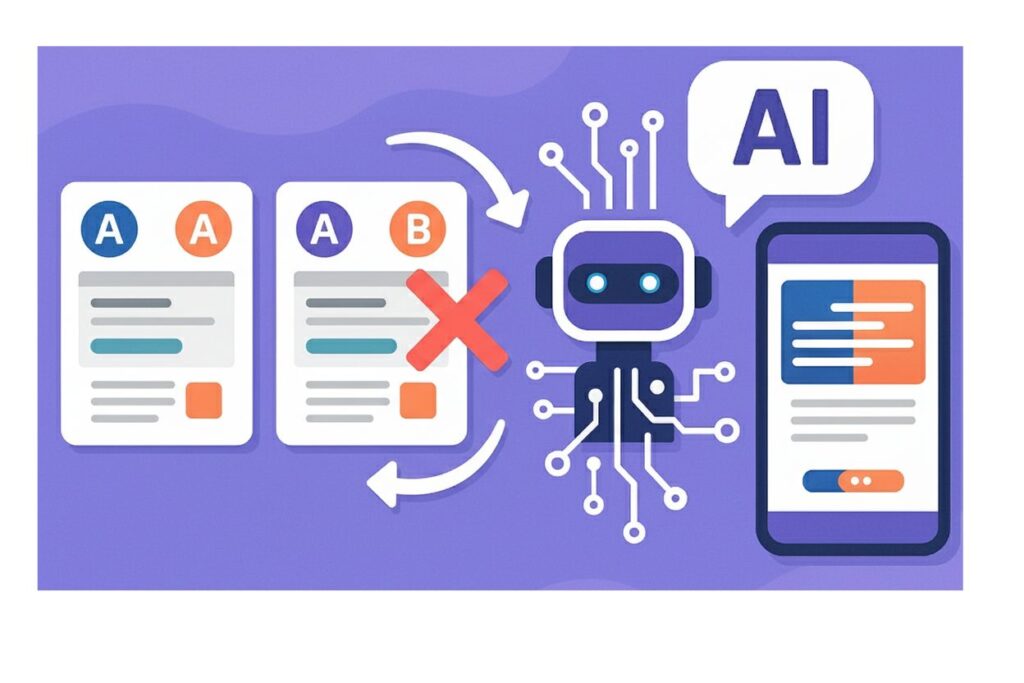
1. Understanding Ad Variations
Ad variations are essentially different versions of the same ad. You might change the headline, tweak the body text, adjust the call-to-action, or even modify the visuals. The goal? To figure out which version connects best with your audience.
Imagine you have a Facebook ad announcing a new product. One variation says, “Unlock Your Productivity Today,” while another says, “Boost Your Productivity Instantly.” Both promote the same product, but subtle differences in wording, tone, or imagery can produce dramatically different results. AI tools like Predis.ai can generate multiple versions of these ads instantly, giving you options to test without the headache of starting from scratch.
2. The Role of A/B Testing
A/B testing is the process of comparing two or more versions of an ad to determine which performs better. It’s like running a controlled experiment: you change one variable at a time and see how your audience reacts.
Businesses that run structured A/B tests see higher conversion rates, more engagement, and better ROI. Without testing, you’re guessing which is expensive and risky.
3. Challenges Without AI
Creating ad variations manually comes with several challenges:
- Time-consuming: Brainstorming multiple headlines, visuals, and CTAs can take hours or days.
- Limited creativity: It’s easy to get stuck in familiar phrasing, reducing the chance of discovering high-performing variations.
- Inconsistent messaging: Different ad designers or copywriters may produce variations that don’t align with the brand voice.
- Hard to scale: For businesses running multiple campaigns across platforms, manual variation generation quickly becomes overwhelming.
How AI Transforms Ad Variation Creation?
Creating ad variations manually can feel like spinning plates, there’s the copy, the visuals, the call-to-action, and then making sure it all works across different platforms. It’s time-consuming, stressful, and often limits how much you can experiment.
That’s where AI changes the game. By analyzing past performance, generating multiple options in minutes, and adapting content for different audiences and platforms, AI doesn’t just speed up the process, it makes your ad variations smarter, more targeted, and more likely to perform. Let’s break down exactly how AI transforms the way marketers create and test ads.
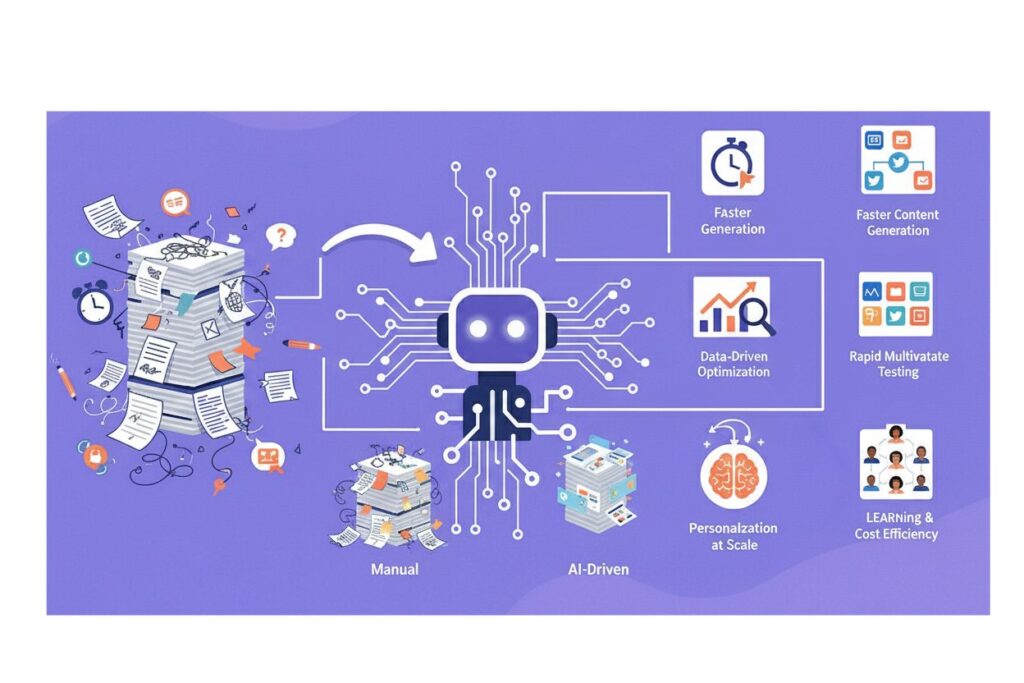
1. Faster Content Generation
- Generate dozens of headlines, copy, and CTAs in minutes instead of hours or days.
- AI can suggest alternative phrasing and wordplay you might not think of.
- Reduces bottlenecks in creative teams, letting marketers focus on strategy.
2. Consistency Across Channels
- Ensures brand voice remains uniform across multiple platforms.
- Automatically adapts copy length and style for different ad formats (e.g., Instagram captions vs Google search ads).
- Reduces errors that often happen when manually adjusting content for each channel.
3. Data-Driven Optimization
- AI analyzes historical campaign performance to predict which variations are likely to perform best.
- Identifies trends, like what type of headline grabs attention or what visual elements drive clicks.
- Provides actionable insights for future campaigns, reducing guesswork.
4. Rapid Multivariate Testing
- AI allows you to create variations not just in copy but also in images, colors, and formats for multivariate testing.
- Lets you test multiple elements simultaneously to understand audience preferences more comprehensively.
5. Personalization at Scale
- AI can automatically tailor ad variations for specific audience segments (age, location, interests).
- Enables dynamic ads that feel more personal without manually creating hundreds of versions.
6. Learning and Iteration
- Each test feeds back into the AI, helping it improve future suggestions.
- Over time, AI gets better at generating variations that are more likely to convert, essentially “learning” what your audience responds to.
7. Cost Efficiency
- Reduces the need for large creative teams to manually produce dozens of variations.
- Minimizes wasted ad spend by focusing on high-performing versions identified quickly.
Step-by-Step Guide to Generating Ad Variations with AI
Creating ad variations with AI might sound technical, but it doesn’t have to be complicated. Think of it like giving a smart assistant your ideas and letting it quickly generate dozens of options for you. By following a clear, step-by-step process, you can turn a single ad concept into multiple high-performing versions, ready to test with your audience.
This guide will walk you through each step, from defining your goals to analyzing results, so even beginners can confidently leverage AI for smarter, faster ad creation.
S1. Define Your Objective
Before creating variations, be clear about your campaign goal. Are you trying to drive clicks, generate leads, boost awareness, or encourage purchases? Your objective will guide the type of variations you need.
For example, if conversions are your priority, focus on strong CTAs and benefit-oriented headlines.
S2. Input Your Base Ad
Provide your AI tool with your original ad or core message. Predis.ai analyzes this input and understands the essence of your campaign, making it easier to generate relevant variations that align with your brand and objective.
S3. Generate Multiple Variations
Once the base ad is set, you can create multiple variations:
- Copy variations: Headlines, body text, and CTAs with different wording or tone.
- Visual variations: Images, graphics, and video snippets.
- Tone variations: Playful, professional, or informative.
AI ensures you can experiment with dozens of versions in minutes instead of days.
S4. Refine and Customize
Even though AI is powerful, human oversight is crucial. Review the variations and tweak them as needed to ensure clarity, emotional resonance, and brand consistency. Small adjustments can significantly improve performance.
S5. Set Up A/B Tests
Organize your test: start with two or more variations and measure performance. For more complex campaigns, consider multivariate testing, multiple elements like headlines, visuals, and CTAs simultaneously.
A simple approach: test headlines first, then images, then CTAs. This method isolates which element drives performance improvements.
S6. Monitor and Analyze Results
Track key metrics like CTR, conversions, and engagement. AI-generated insights from Predis.ai can help you understand why one variation outperforms another. Use this data to inform future campaigns.
Best Practices for AI-Generated Ad Variations
When using AI to generate ad variations, it’s easy to get carried away with automation. While AI can save time and offer creative options, the best results come from a thoughtful balance between technology and human insight. Following some key best practices ensures your AI-generated ads are not only efficient but also effective, engaging, and aligned with your brand.
1. Limit Automation, Keep Human Oversight
AI can produce dozens of ad variations in minutes, but it doesn’t understand context or emotions the way humans do. Always review each version to ensure it resonates with your audience, aligns with your brand voice, and avoids awkward phrasing or tone mismatches. Small adjustments, like tweaking word choice or emphasizing a benefit, can make a huge difference in performance.
2. Focus on One Variable at a Time
It’s tempting to test everything at once different headlines, visuals, and CTAs but this can make it hard to understand what’s actually driving results. Focus on one variable per test. For instance, try testing different headlines first while keeping visuals and CTAs constant. Once you know which headline works best, move on to testing visuals, and so on. This approach provides clearer insights and makes optimization more precise.
3. Use Insights to Improve Future Campaigns
AI tools don’t just generate ads, they learn from performance. By analyzing which variations perform best, you can guide the next round of campaigns. For example, if a playful tone performs better with younger audiences, use that insight to generate more variations targeting that segment. Over time, this creates a feedback loop where AI becomes smarter and your campaigns more effective.
4. Tailor Variations to Audience Segments
Not all audiences respond the same way. AI allows you to customize ad variations for different segments based on age, location, interests, or platform behavior. A message that works on Instagram might not perform as well on LinkedIn, so personalization is key. Using audience insights to guide AI-generated variations ensures higher engagement, better conversions, and more efficient ad spend.
Tools and Platforms to Generate Ad Variations
Creating multiple ad variations doesn’t have to be a manual grind, AI-powered tools make it faster, smarter, and more scalable. Whether you need fresh copy, eye-catching visuals, or predictive insights on what will perform best, there’s a tool designed for the task. Using the right platform not only saves time but also helps you experiment more effectively, so you can identify the variations that truly resonate with your audience. Here’s a closer look at some of the top tools marketers rely on today.
1. Predis.ai
An all-in-one AI platform designed to help marketers, small business owners, and content creators generate high-performing ad variations quickly. It combines both copy and visual variation generation with predictive insights to guide your campaigns.
Features:
- Generates multiple ad copy variations (headlines, body text, CTAs) in minutes
- Creates visual variations tailored for social media platforms
- Predictive insights based on past campaign performance
- Learns from previous campaigns to optimize future ad suggestions
- Maintains brand voice and consistency across channels
Review:
Users rave about Predis.ai for its time-saving capabilities and accuracy in generating both copy and visual content. It’s particularly praised for predictive analytics, helping teams make data-driven decisions rather than guessing which ad will perform best. Marketers report faster experimentation and improved ROI when integrating Predis.ai into their ad workflows.
2. Jasper.AI
A leading AI copywriting tool widely used to create multiple text variations quickly.
Features:
- Generates headlines, body copy, and CTAs
- Supports multiple writing tones and styles
- Templates for ad copy, emails, and social media posts
Review:
Jasper AI is appreciated for producing high-quality copy with minimal input. It’s especially useful for teams who want to test different messaging styles quickly. Some users note that visuals need to be paired with other tools for a complete ad creation workflow.
3. Canva AI
The tool focuses on creating visually appealing ad content.
Features:
- Generates ad images and graphics with slight variations
- Offers templates for social media and display ads
- Customizes color schemes, fonts, and layouts
Review:
Marketers like Canva AI for its simplicity and speed in producing multiple visuals. While it excels in design, it doesn’t generate ad copy, so pairing it with a copy tool like Predis.ai or Jasper is ideal.
4. Copy.ai
An AI-powered platform for quick copywriting and ad generation.
Features:
- Generates multiple copy variations in different tones
- Supports short-form and long-form content
- Customizable templates for ads and social media
Review:
Users find Copy.ai great for brainstorming ad copy quickly. Its simplicity is a plus, though it lacks the advanced predictive insights some other tools provide.
5. AdCreative.ai
The tool is designed to combine AI-generated visuals and predictive performance for ads.
Features:
- Creates multiple ad creatives and copy suggestions
- Predicts which ads are likely to perform best
- Integrates with ad platforms for streamlined testing
Review:
Marketers like AdCreative.ai for its focus on data-driven predictions. While slightly less flexible on copy variations compared to Predis.ai or Jasper, it’s useful for optimizing ad performance.
6. Visme
An AI-assisted visual content platform that helps create ad graphics and social media visuals.
Features:
- Offers templates for social media, display ads, and presentations
- Customizable graphics, layouts, and color schemes
- AI-assisted suggestions for design variations
Review:
Visme is praised for user-friendly design tools and variety of templates. It’s ideal for marketers looking for quick visual variations but requires pairing with a copy tool for complete ad campaigns.
Conclusion
Generating ad variations for A/B testing with AI isn’t just about speed, it’s about smarter campaigns. AI tools like Predis.ai allow marketers, small business owners, and content creators to experiment faster, maintain brand consistency, and make data-driven decisions.
When combined with human oversight, AI-generated ad variations can significantly boost engagement, conversions, and ROI. The takeaway? Use AI to expand your creative possibilities, but guide it with human intuition. Start experimenting with AI-generated ad variations today and watch your campaigns perform smarter, faster, and better.
